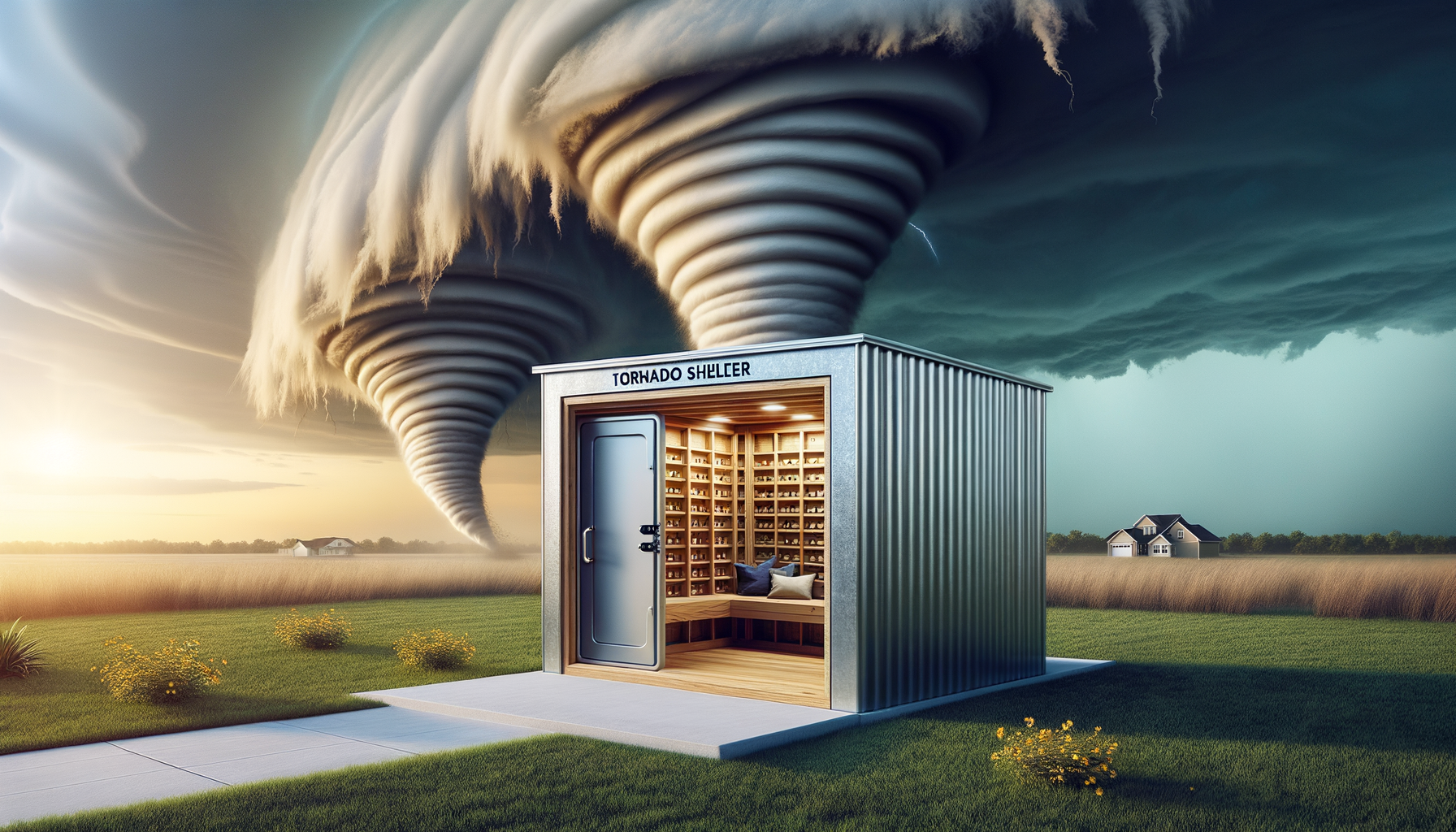
Staying Safe: How to Choose a Highly Rated Tornado Shelter for Your Loved Ones
Understanding the Importance of Tornado Shelters
When it comes to extreme weather conditions, tornadoes are among the most unpredictable and destructive forces of nature. They can strike with little warning, leaving a path of devastation in their wake. For families living in tornado-prone areas, having a reliable shelter is not just a precaution—it’s a necessity. Tornado shelters provide a safe haven, protecting your loved ones from the violent winds and flying debris that characterize these storms.
Statistics show that tornadoes can reach wind speeds of up to 300 miles per hour, capable of leveling well-constructed homes. The United States witnesses an average of over 1,000 tornadoes annually, making it imperative for residents in vulnerable regions to take proactive measures. Investing in a tornado shelter can significantly reduce the risk of injury or fatalities during such events.
Beyond immediate safety, having a tornado shelter can also offer peace of mind. Knowing that there is a designated safe space in your home or nearby can alleviate anxiety and allow families to prepare calmly and efficiently when severe weather warnings are issued. In this context, choosing a highly rated tornado shelter becomes a vital decision for ensuring your family’s safety and security.
Types of Tornado Shelters: Finding the Right Fit
There are several types of tornado shelters available, each designed to meet different needs and circumstances. Understanding these options can help you make an informed decision that aligns with your family’s requirements.
1. Above-Ground Shelters: These are typically installed inside the home, such as in a garage or basement. They are constructed with reinforced steel or concrete and are designed to withstand high winds and debris. Above-ground shelters are convenient for quick access, especially during sudden tornado alerts.
2. Below-Ground Shelters: Often referred to as storm cellars, these shelters are built underground, either outside the home or beneath it. They offer excellent protection from tornadoes, as they are less likely to be affected by flying debris. However, accessing them during a storm may require venturing outdoors, which can be challenging in severe weather conditions.
3. Community Shelters: For those who do not have the space or budget for a personal shelter, community shelters provide a viable alternative. These are usually larger facilities designed to accommodate multiple families. While they offer robust protection, reaching them in time can be a concern if they are not located nearby.
Each type of shelter has its advantages and limitations. Factors such as location, budget, and family size will influence the choice of shelter. Evaluating these aspects carefully will ensure that you select a shelter that offers optimal protection and convenience.
Key Features to Consider When Choosing a Shelter
When selecting a tornado shelter, it’s essential to consider several key features that can impact its effectiveness and usability. Here are some critical factors to keep in mind:
1. Construction Material: The material used in building the shelter plays a significant role in its durability and safety. Reinforced steel and concrete are popular choices due to their ability to withstand extreme forces. Ensure that the shelter meets or exceeds the Federal Emergency Management Agency (FEMA) standards for construction.
2. Size and Capacity: The shelter should be spacious enough to accommodate all family members comfortably. Consider future needs as well, such as accommodating guests or pets. A cramped shelter can lead to discomfort during extended stays.
3. Ventilation: Proper ventilation is crucial for maintaining air quality and preventing suffocation. Look for shelters with adequate ventilation systems to ensure a continuous supply of fresh air.
4. Accessibility: The shelter should be easily accessible, especially for individuals with mobility issues. Features like ramps, wide doors, and handrails can enhance accessibility and ensure that everyone can reach safety quickly.
5. Location: The shelter’s location should be convenient for quick access during emergencies. Consider proximity to living areas and avoid placing it in areas prone to flooding.
By paying attention to these features, you can select a tornado shelter that not only offers exceptional protection but also meets the practical needs of your family.
Evaluating Costs and Budget Considerations
Investing in a tornado shelter is a significant decision, and understanding the associated costs is essential for budget planning. The price of a tornado shelter can vary widely based on factors such as size, material, and installation complexity.
1. Material and Construction Costs: Shelters made from reinforced steel and concrete are generally more expensive due to their superior strength and durability. However, they offer long-term value by providing reliable protection.
2. Installation Expenses: The cost of installing a tornado shelter can add to the overall budget. Below-ground shelters may require excavation and additional labor, increasing installation costs. Conversely, above-ground shelters are often easier and less expensive to install.
3. Permits and Inspections: Depending on local regulations, you may need permits and inspections for your shelter. These can incur additional fees, so it’s important to factor them into your budget.
4. Financing Options: Many companies offer financing plans to help make tornado shelters more affordable. Exploring these options can provide flexibility and ease the financial burden.
While the initial investment in a tornado shelter can be substantial, it is a worthwhile expense that prioritizes the safety and well-being of your family. Consider the long-term benefits and peace of mind that a reliable shelter can provide when evaluating costs.
Installation and Maintenance: Ensuring Long-Term Safety
Proper installation and maintenance of a tornado shelter are crucial for ensuring its effectiveness and longevity. Here are some important considerations:
1. Professional Installation: Hiring experienced professionals for installation is vital. They ensure that the shelter is securely anchored and meets safety standards. Professional installation minimizes the risk of structural failures during a tornado.
2. Regular Inspections: Conduct regular inspections to identify any wear or damage. Look for signs of rust, leaks, or structural weaknesses. Addressing these issues promptly can prevent potential failures.
3. Emergency Supplies: Stock your shelter with essential supplies such as water, non-perishable food, flashlights, and first aid kits. Regularly check and replenish these supplies to ensure they are ready for use.
4. Communication Plan: Establish a communication plan with family members to ensure everyone knows how to access the shelter quickly. Practice drills can help reinforce this plan and ensure everyone is prepared.
5. Maintenance of Ventilation Systems: Ensure that ventilation systems are clean and functioning properly. Blocked vents can lead to poor air quality, making the shelter uncomfortable during extended stays.
By focusing on these aspects, you can maintain your tornado shelter in top condition, ensuring it remains a reliable refuge during severe weather events.

